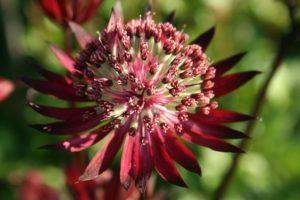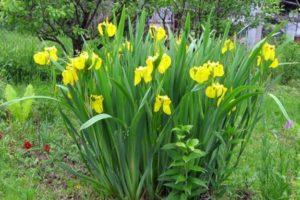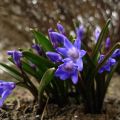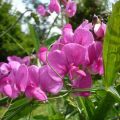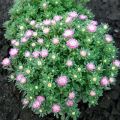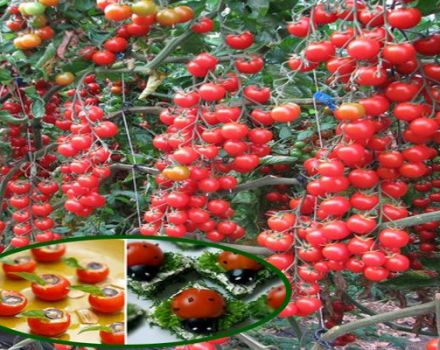Description of 25 species and varieties of hellebore, planting and care in the open field
The hellebore requires certain care and adherence to planting rules. The plant pleases with its flowering in early spring, when other crops begin to wake up. There are about 20 types of crops that served as the basis for the development of new varieties. Heleborus has many colors, different periods of budding and flowering.
Description and features
The perennial plant belongs to the Buttercup family. Heleborus flowers are poisonous, most often they are white in color. There are 22 known species from which varieties are cultivated. The hellebore has dense leathery green foliage that hibernate with it. It is frost and drought resistant. Flowering begins in late March and ends in July, the duration of flowering depends on the variety. In one place, the grass grows up to 10 years.
Growing seedlings from seeds
For growing from seeds, it is necessary to prepare the planting material in advance, sow the seeds correctly, monitor the seedlings, and correctly dive into the open ground.
Preparation of planting material
Heleborus seeds are harvested at the end of flowering. They can also be purchased at flower shops. It is recommended to plant seeds immediately in a pot, since the longer they lie, the lower their germination capacity.
How to sow
To grow seedlings, soil is poured into the prepared container, filling it halfway. Pour warm water. Then the seeds are immersed. They are covered with soil 1.5 cm. Planting is carried out immediately after collecting the seeds, and seedlings appear only in March. After the formation of 3-4 natural leaves, the seedlings are transferred to the ground.
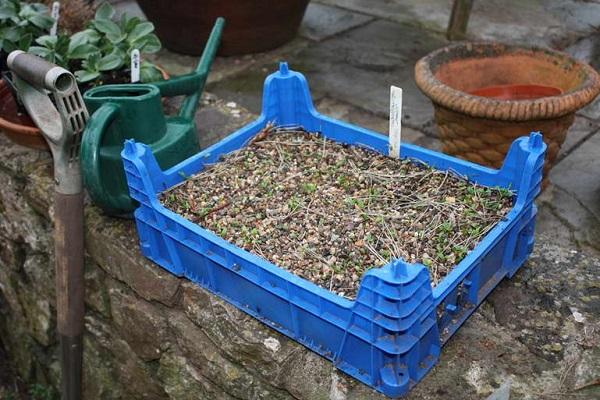
Watering
The plant is provided with abundant watering when it is still young. Water the first week after planting, use 1 liter of water per plant. Water is used previously settled or rainwater. After 3-4 years of age, the plant is watered every 2-3 weeks.
Dive
A pick is carried out when the first 3-4 leaves appear in the seedlings, it can be transplanted into the ground. Choose a suitable penumbra spot, dig holes and transfer the seedlings to them.Sprinkle each plant with soil in layers, compacting each with your hands. This period usually falls in March. The plant does not produce flowers for the first 3 years.

Outdoor cultivation
For cultivation in the open field, it is necessary to choose the right place, soil for cultivation. Saplings are planted according to a certain scheme so that they do not interfere with each other's development in the future.
Seat selection
To plant heleborus, choose penumbra areas. They thrive when grown under trees with sprawling foliage. They are combined with other early types of flowers.
Ground requirement
Heleborus prefers loose, airy soils. They are drought-resistant and do not tolerate excess moisture in the soil. The increased water content contributes to a decrease in plant immunity and affects the formation of flowers.
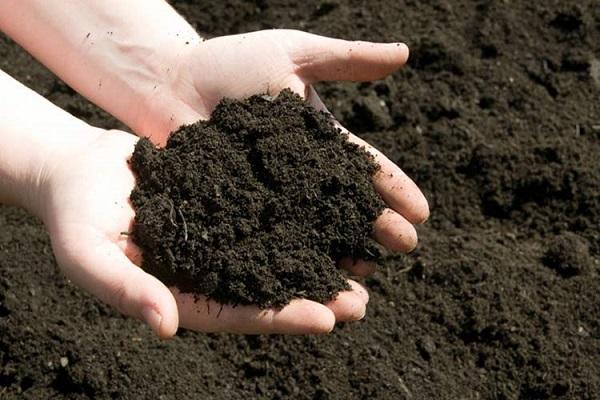
Landing scheme
When planting seedlings, they dig holes 25 cm deep and 25 cm in diameter.The distance between the plants is 30 cm.
Reproduction
Heleborus reproduces through seeds and by dividing bushes. There are hellebore species that take root better when growing seeds, while others reproduce well by division.
Sowing seeds
Seeds are harvested in mid-June or July, depending on the timing of flowering. It is recommended to tie the box with seeds with gauze in advance so that when the seed box breaks, the material remains in it, and does not fall on the soil. The collected seeds are transplanted into containers and left until sprouting.
Division of bushes
After flowering is complete, the bush is dug up and divided into several parts. Each new bush is planted separately. Such plants continue to grow and produce flowers in the first year.

Care
To obtain lush flowers and prolonged flowering, it is necessary to provide the plant with proper care: monitor watering, feed, mulch the bushes, thin out, protect from pests.
Watering
Adult plants are watered every 2-3 weeks. They retain moisture well due to their dense leathery leaves. Watering abundantly can harm the hellebore.
Important! With prolonged drought, irrigation increases.
Top dressing
Heleborus practically does not need additional feeding, he takes all the minerals he needs from the soil and moisture. If you care for the crop with care, in the spring you can make a one-time fertilizing with nitrogen content. Nitrogen improves flowering.
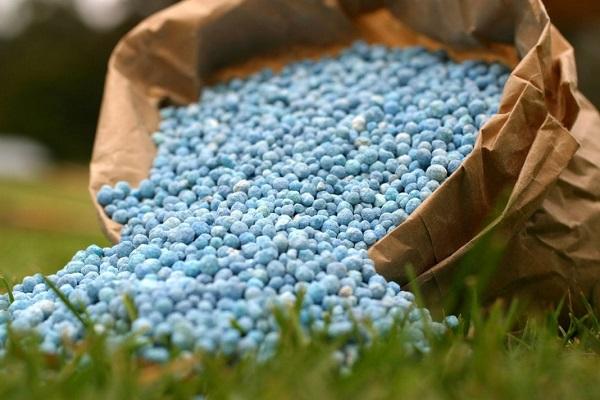
Mulching
Hellebore mulching is carried out at the end of the summer cottage season. The root part of the plant is covered with hay or fallen leaves. This prevents root decay.
Diseases and pests
Like other crops, Helleborus is susceptible to attack by harmful insects and some diseases. To combat them, preventive treatments with chemicals are carried out.
Slugs
Slugs appear on the leaves and stems of the plant in mid-summer. They feed on pieces of plant leaves. The quality of flowering is deteriorating. Slugs are collected from leaves and destroyed.

Mouse
The mice feed on the roots of the Heleborus. These are small rodents that wake up in mid-spring. To combat them, traps with poison are made on the site.
Aphid
When overflowing bushes, aphids attack. These are small black insects. They are localized on the underside of the leaf and feed on its juice. Aphids multiply rapidly. To combat them, modern insecticides are used.
Hop fineworm
These are butterflies that lay their eggs on hellebore leaves. Larvae emerge from the eggs, which devour the foliage of the plant. To combat them, the larvae are removed, and the flowers are sprayed with insecticides.
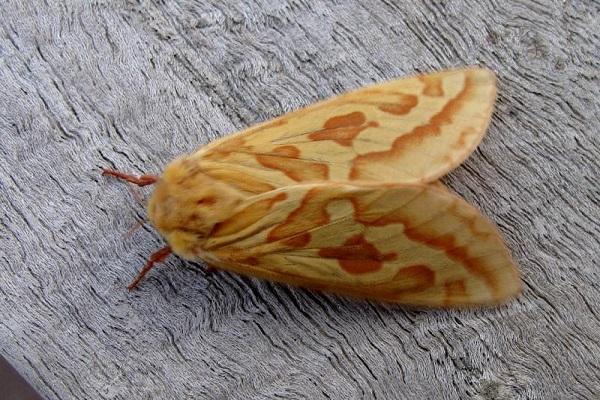
Coniothyrium hellebori
A fungal disease that appears with increased watering of the plant. Small gray or black spots form on the leaves. The disease affects the quality of flowering. To combat the fungus, the affected areas of the leaves are removed and treated with antifungal drugs.
Thinning
After the end of flowering at the end of the season, thinning of the bushes is carried out. With a strong thickening of the shoots, every third is removed. Also remove all damaged and dry shoots.
Preparing for winter
Heleborus does not need shelter for the winter. Its shoots and foliage tolerate low temperatures well, they should not be cut off. In September, the plant can be covered with fallen leaves to better cover the roots.
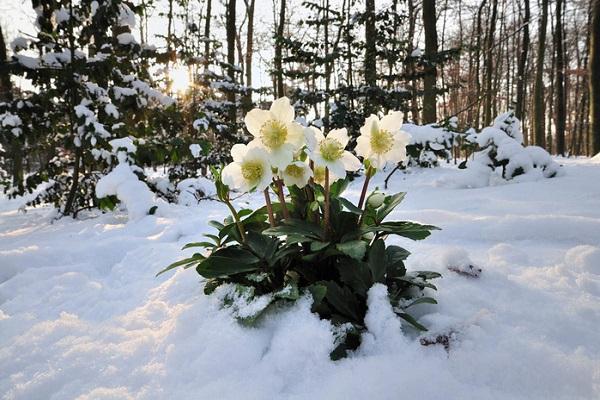
Transfer
The hellebore is not very fond of changing the place of growth. It is transplanted in the event that the wrong place was initially selected. The plant grows in one place for about 10 years.
Kinds
Many species of hellebore are found in their natural environment. Plants prefer shaded areas to grow. Florists grow Heleborus in landscaping areas.
The black
The most common and popular type of hellebore used by flower growers in landscape design. The plant reaches a height of about 30 cm, forms tall peduncles up to 60 cm in height. At the top there are large flowers of double color, which are 8 cm in diameter. Inside the flower is white, and outside it is light pink. The hellebore is a frost-resistant plant that can withstand temperatures down to -35 ° C. Its foliage remains green throughout the year, buds are formed in early April, and flowering lasts 2 weeks.
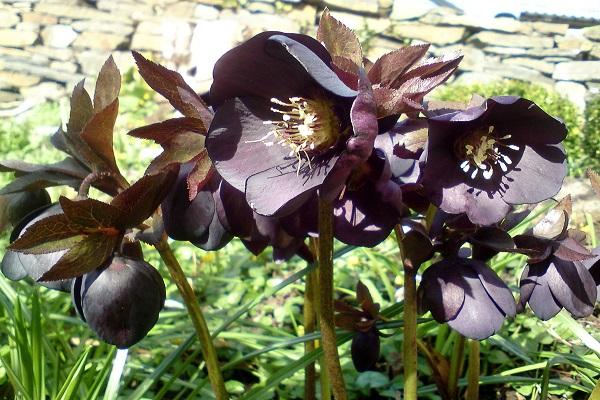
Oriental
The homeland of this species is the Caucasus. This is a perennial hellebore, reaching a height of 30 cm, forms flowers of medium size, 5 cm in diameter. Flowers are light yellow in color with burgundy edging. The leaves are large, fleshy. This species is susceptible to attack by fungal diseases, from which it loses its attractiveness. To prevent infection, it is necessary to carry out preventive spraying with fungicides annually.
Smelly
This type of hellebore has stems with abundant foliage. Stems reach a height of 30 cm. The plant forms high peduncles up to 80 cm. At the top, dense inflorescences are formed, which consist of small flowers. They are bell-shaped. The color of the flowers is light green with a burgundy rim and small specks. This species not only tolerates high frosts, but also easily copes with drought. The hellebore forms a powerful root system that absorbs water from the deep layers of the earth.
Caucasian
This species is least often used on plots, as the plant is very poisonous. The most common Caucasian hellebore in the Caucasus. It forms tall peduncles 20-50 cm long. At the top are light yellow flowers with a greenish tint. The flowers are large, diameter 80 mm. The plant forms large fleshy leaves 15 cm long, which have elongated petioles. The flower tolerates severe frosts. Differs in the duration of flowering, which begins in mid-April and ends in July.
Important! The Caucasian species of hellebore contains the largest amount of poison.
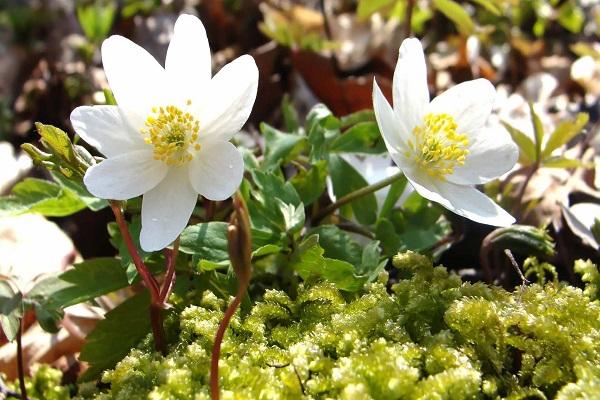
Tuberous
A special kind of hellebore. It was obtained by crossing other types of culture. It has a variety of colors. The height of the shoots is 30 cm. They form tall peduncles. The flower diameter is 8 cm. The plant tolerates drought and frost well. Tubers form on the roots, which accumulate nutrients and moisture. These substances are carried through the tubers throughout the stem.
Popular varieties
Breeders around the world have developed many varieties of Heleborus. Each of them has its own characteristic color and care recommendations.
Potter's Wheel
The plant variety that has the largest flowers. They reach 12 cm in diameter. Refers to the black hellebore species. It has a shoot height of 30 cm and high half-meter peduncles.
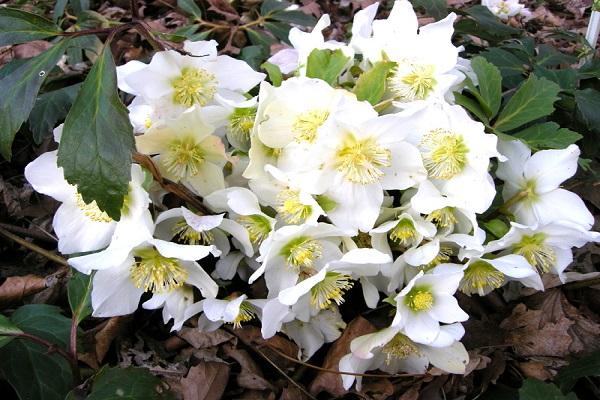
Praecox
This variety has a special pale pink color. The plant blooms in the month of November. The leaf remains light green throughout the year.
Double ellen red
It belongs to the Eastern Heleborus, the plant reaches a height of 30 cm, forms long peduncles, at the ends of which are bright purple double flowers with yellow stamens.
Blushing
Heleborus of this variety forms characteristic bright red flowers. Their diameter is 8 cm. Yellow stamens are formed inside. The bush tolerates reproduction by division and is frost-resistant.
Blue Lady
Belongs to the eastern species of Heleborus. The plant has light green leaves, forms corollas with five ash-purple petals with burgundy edging. Inside are bright light yellow stamens.
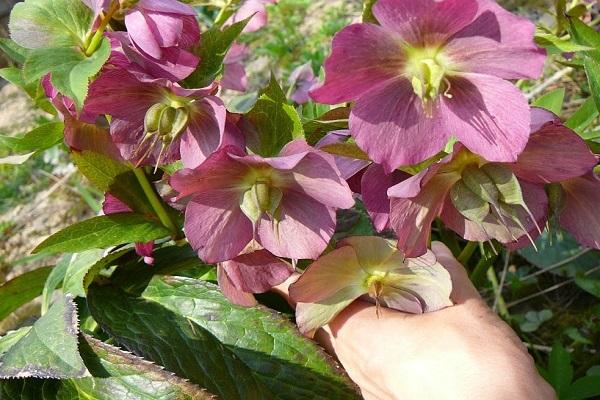
HGC Joshua
Refers to the black Heleborus species. Differs in the earliest flowering, which begins in November. Forms flowers with a light beige color.
Pracox
Refers to the black kind of culture. Forms pale pink flowers with a diameter of 8 cm. Peduncles are tall, up to 30 cm. Flowering begins in April and lasts 10-14 days.
White Swan
Refers to the eastern hellebore species. The plant is short, about 30 cm, forms milky white flowers of small diameter, about 50 mm.
Rock and Roll
Also refers to the eastern hellebore species. Forms white flowers with crimson specks, which is a distinctive feature of the variety.
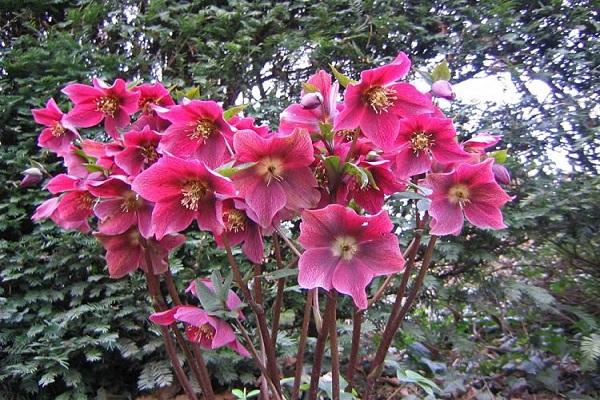
Blue Anemone
A short perennial plant belongs to the oriental species. Forms flowers of medium size, pale purple color.
Leidy Series
This is a special kind of oriental hellebore, the bushes of which reach 40 cm in height. When blooming at the top of the shoots, flowers of six different colors are formed at once.
Violet
A hybrid variety that has lush white inflorescences with a fluffy core. Each flower has a diameter of 5 to 8 cm. A thin light pink border forms along the edge. Low frost-resistant perennial plant.
Bellinda
The hybrid variety forms double flowers with a green rim and a greenish-pink section on each petal. The plant reaches a height of 30 cm. The leaves are bright green, fleshy.
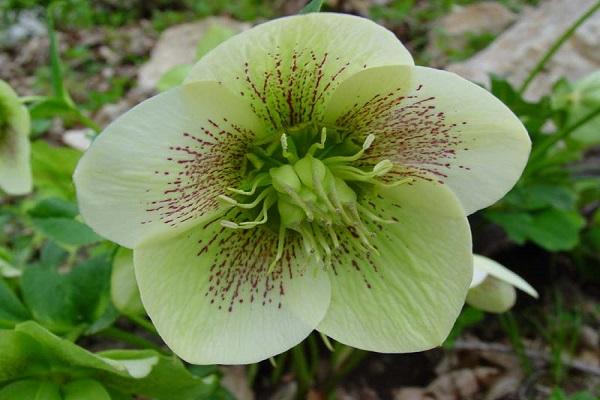
Queen of the Knight
This variety produces bright, dark purple flowers with bright yellow stamens. Refers to a hybrid hellebore species.
Orientalis
Belongs to the oriental look. Forms lush inflorescences with a diameter of 5 cm. The stems are low, about 30 cm, the color is varied: from light purple to black.
Niger
Refers to the black Heleborus species. Niger got its name for its characteristic black roots. It reaches a height of 30 cm, forms tall peduncles up to 50 cm, with snow-white corollas, on which there are small burgundy specks.
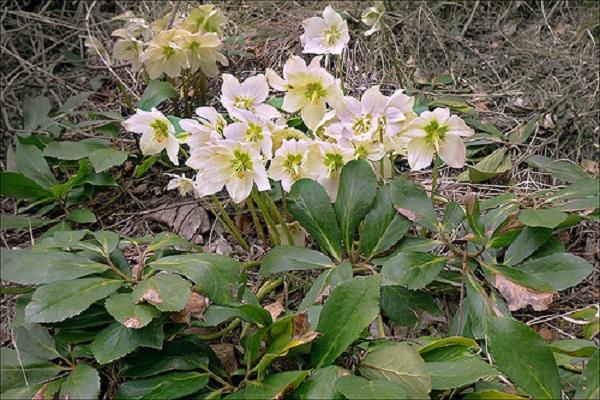
Collection and storage of seeds
The seeds form in pods after flowering. Then the capsules break, the seeds spill out onto the ground. New shoots are formed from them in March. To collect the seeds, each box is bound with a piece of gauze, then the seeds will not fall on the ground, but will remain in the tissue.
Important! The earlier the seeds are planted, the higher their germination rate..
When it blooms
The hellebore blooms in March, depending on the variety. The duration is different, some varieties bloom up to 2 months, and some only two weeks. This is the advantage of culture. Flowering occurs when other plants begin to wake up.
Application in landscape design
The hellebore is planted next to trees and shrubs. Separate flower beds are also formed with different varieties of Helborus. Flowers are often combined with other winter-hardy species: chiondox, crocuses, snowdrops.
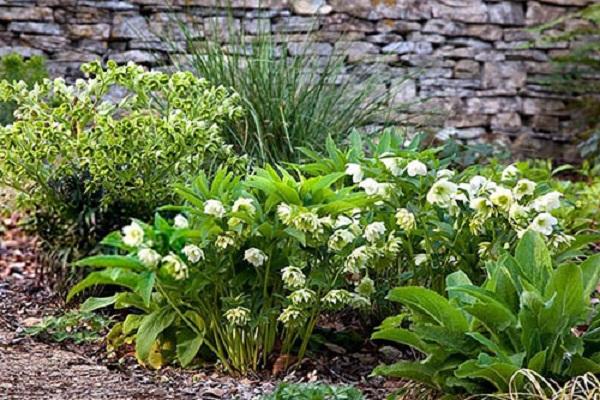
Hellebore properties
Hellebore flowers are poisonous. With proper application and low dosage, the plant has a healing effect. Its roots are used in folk medicine to improve the condition of the body and complex treatment of diseases. Heleborus has the following beneficial properties:
- regulates the metabolic processes of the body;
- normalizes blood pressure;
- lowers blood glucose levels;
- has an antiseptic effect;
- promotes the removal of excess fluid from the body;
- has an antioxidant effect;
- cleans the gastrointestinal tract;
- relieves acute headaches;
- helps to cope with colds;
- prevents the development of tumors.
Important! The use of Heleborus should be discussed with a doctor to select the desired dosage and avoid overdose.
Use in traditional medicine
In folk medicine, decoctions, powders and infusions are prepared from the roots of the plant. The roots are harvested in September, after flowering ends. They are well washed and cleaned of earth. Then it is dried at a temperature of 40-45 ° C. The roots retain the healing properties for 2 years.

This remedy helps with obesity. The use of Heleborus for 4 weeks will help get rid of 5-6 kg without exhausting diets and hunger strikes.
Overdose consequences
In case of an overdose with hellebore poisons, the following symptoms appear:
- tinnitus;
- intense thirst;
- dry mouth;
- laryngeal edema;
- difficulty breathing;
- dizziness;
- chest pain.
The plant contains a large number of poisons that affect the cardiovascular system. Poisoning is possible after the first use. The dosage must be selected together with the attending physician.
